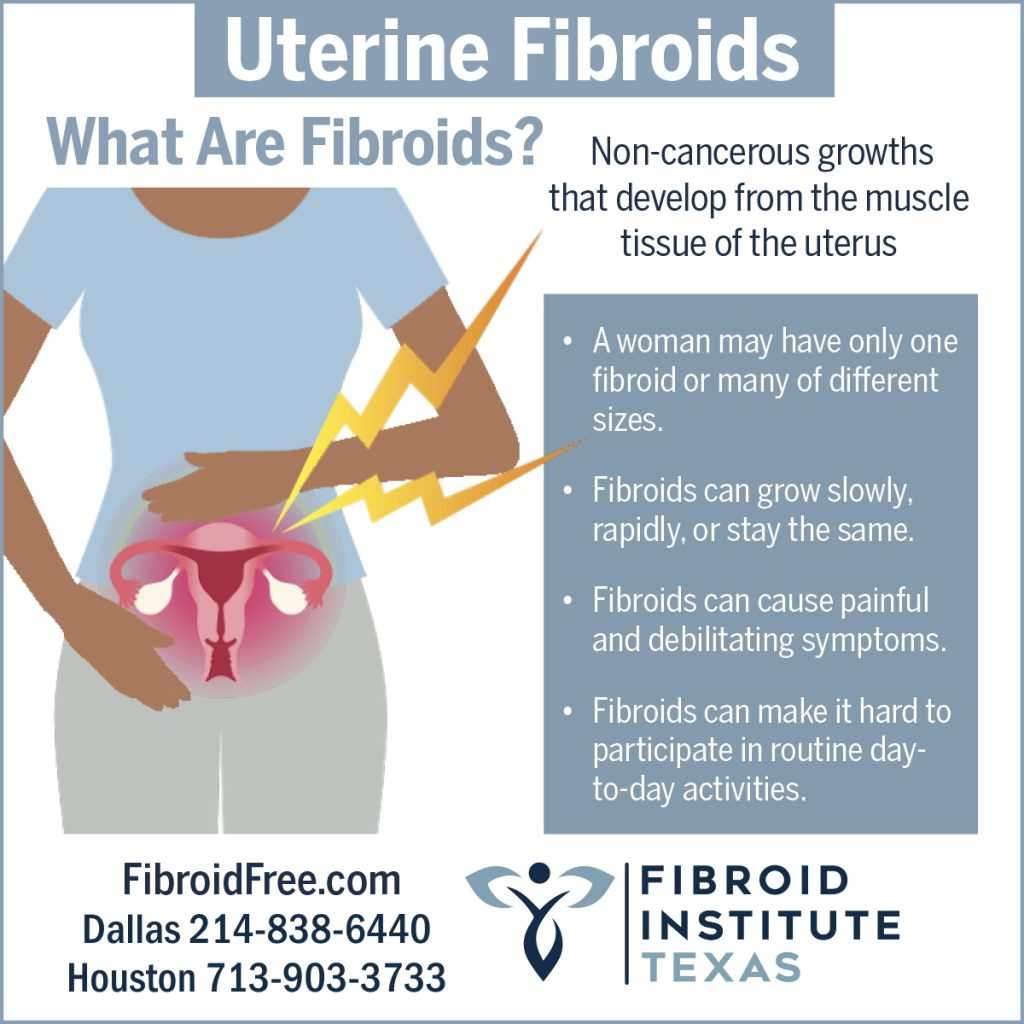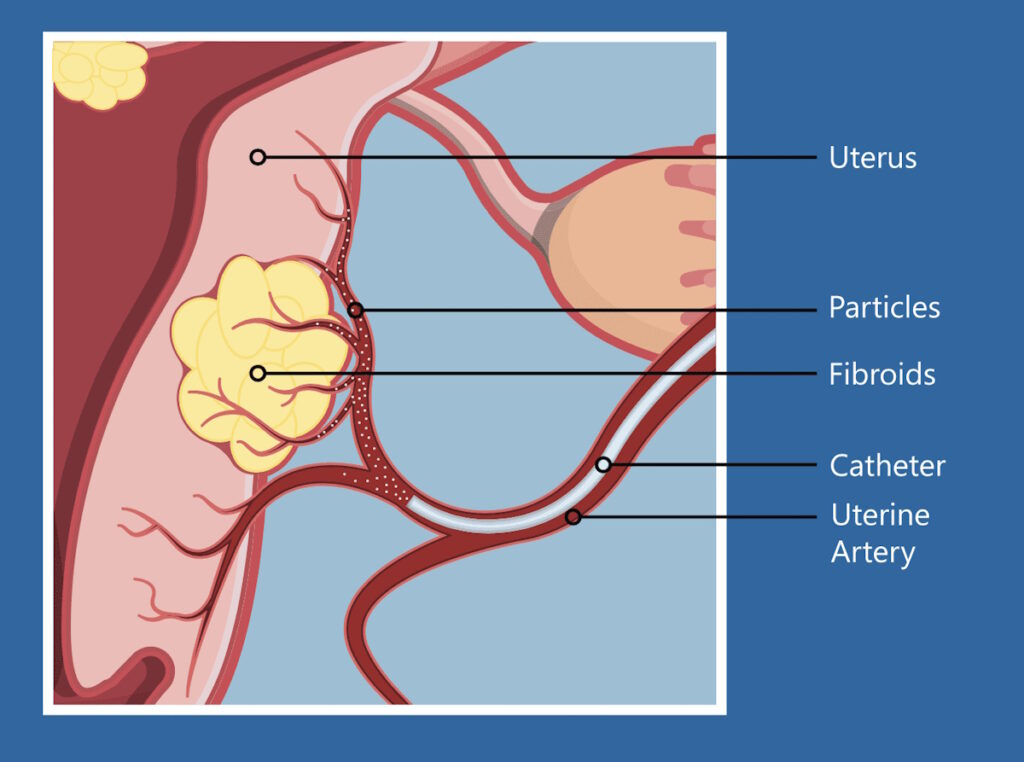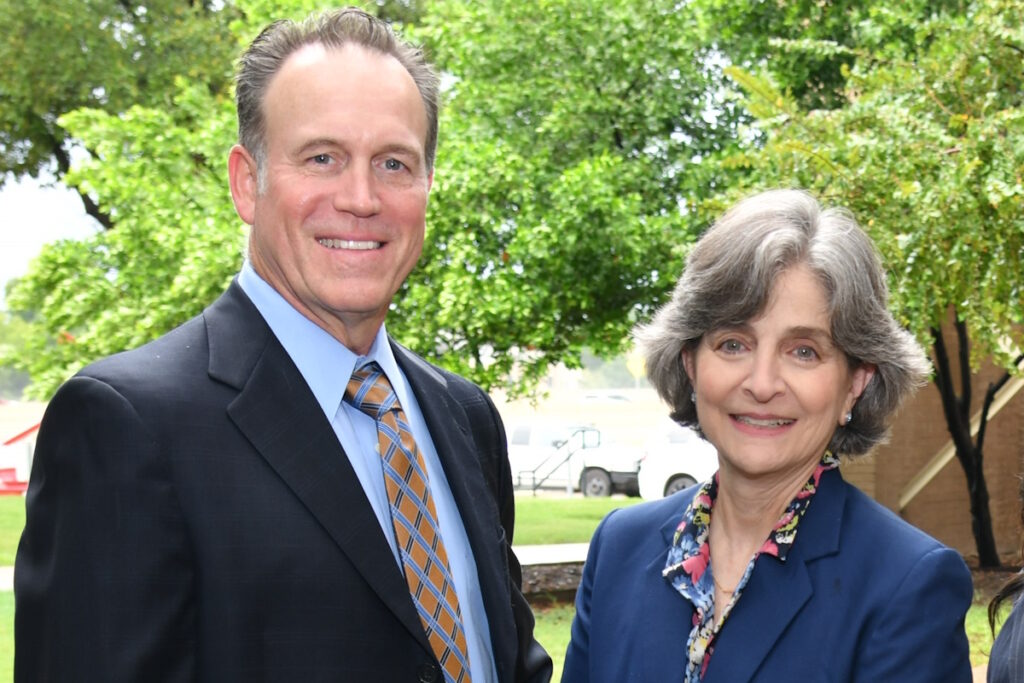At the advice of her mother and grandmother, Stefani* has researched as much as she can about uterine fibroids. She knows they are noncancerous tumors in the female reproductive system. She also knows 3 out of 4 women will develop them during their lifetimes, though not all of them will experience pain. She also knows Black women such as herself are more at risk for developing fibroids and that the list of potential symptoms—if she were to experience them—includes everything from heavy and irregular periods to pain during sex, back pain, constipation, pelvic pain and pressure, and more.
What she doesn’t know is if uterine fibroids can be prevented. In other words, is there a way for her to get a jump on this often-debilitating condition and avoid going down the same path that so many other women have, including the women in her own family?
Sadly, preventing uterine fibroids and the discomfort associated with them may not be possible. A woman’s risk of developing them depends on a variety of factors, some of which are beyond your immediate control. That said, there are ways to “decrease” your risk if you don’t have fibroids yet AND manage existing symptoms if you do.
As previously mentioned, not every woman has symptomatic uterine fibroids. And those that do have options to help them lead a healthy life that is symptom-free.
Various Factors Make Uterine Fibroids Difficult To Avoid
If you are new to the uterine fibroids conversation, knowing what you’re potentially dealing with is important. First things first, they are benign tumors that develop from the muscle tissue of the uterus. When we say “benign,” we mean that you don’t have to worry about them leading to a cancer diagnosis. That said, they can be very painful for many women, mostly because they can develop in different locations, differ in size, and either stay that way or grow at different rates.

Some women delay getting diagnosed or seeking treatment because they think what they’re experiencing is a normal part of being a woman. As a result, they can go years leading a very limited life. Many women are unaware they have fibroids and will only accidentally discover them during a routine pelvic exam with their doctor. In other situations, patients may experience fibroid pain and other life-altering symptoms, especially as they grow and put more pressure on the uterus and bladder.
Common Symptoms of Uterine Fibroids
Examples of the uncomfortable symptoms that can be associated with uterine fibroids include the following:
- Painful periods, including heavy or inconsistent cycles
- Debilitating cramps, pelvic pain, and pressure
- Back or leg pain
- Bloating or swelling in the lower abdomen
- Weight gain
- Pain during sexual intercourse
- Urinary frequency
- Constipation, diarrhea, and rectum discomfort
- Anemia and fatigue
The reason we say uterine fibroids typically can’t be prevented is because there are simply too many factors that we, as women, cannot control. For example, genetics. You can’t prevent the fact that you are more at risk if your mother, grandmother, or sister has or had fibroids. The National Office on Women’s Health says the genetic component alone means women with a family history of fibroids are roughly three times more likely to develop uterine fibroids.

Additional risk factors include:
Hormones
Estrogen and progesterone stimulate the development of the uterine lining during each menstrual cycle in preparation for pregnancy. As a result, uterine fibroids tend to swell and grow faster during childbearing years when hormone levels are at their highest.
Ethnicity
Black women are three times more likely to develop fibroids. In fact, 80% of Black women will develop fibroids by the time they are 50. What’s worse is that the Journal of Women’s Health states that Black women take an average of almost four years to seek treatment. By this point, their symptoms are likely worse and the number of fibroids they now have doubled in size and quantity—making treatment that much more difficult.
Age
Fibroids can form at any age, but they are more common between the ages of 30 and 50 since they grow throughout a woman’s lifetime as they are menstruating. As hormone levels decrease over the age of 50 and after menopause, uterine fibroids often stop growing or even shrink.
5 Steps You Can Take Right Now for Your Uterine Fibroids
As previously mentioned, it is extremely difficult to prevent uterine fibroids—even if you do all the right things. That said, research does show that healthy lifestyle habits may decrease your risk and manage symptoms.
1. Lower stress levels

If you can manage your stress levels, you may find relief. Become too stressed, and the spike in your hormone levels could encourage fibroid growth. Often, women report that feelings of stress and anxiety disappear after noninvasive fibroid treatment. Many even say their symptoms were less severe leading up to treatment because of how they learned to manage stress.
2. Get more exercise
While you want to avoid engaging in intense or vigorous exercises such as bending and heavy lifting, lighter routines such as yoga, swimming, biking, walking, light weight training, and stretching can boost endorphins, relieve stress, improve your mood, and act as natural painkillers.
3. Avoid alcohol
A few drinks with friends here and there won’t hurt you. But if you’re worried about developing uterine fibroids and possible prevention, just remember that alcohol triggers inflammation and raises hormone levels. This increases your chances of developing fibroids and helps existing ones to grow.
4. Start a Vitamin D supplement routine
Women with Vitamin D deficiencies experience poor muscle, bone, and immune system health and are also at an increased risk of developing uterine fibroids. You can add vitamin D to your diet by eating foods such as fatty salmon and tuna, cod liver oil, and dairy products like fortified milk. Vitamin D is also generated by sunlight. In the short term, compelling research suggests that taking Vitamin D supplements may help stop fibroids from getting bigger and could keep fibroids at their current size.

5. Discuss birth control options with your doctor
Some birth control methods can feed existing fibroids and help them grow. There are studies that show birth control pills can help with certain side effects of existing fibroids, but being on a regular birth control routine may put you at risk for uterine fibroids. Talk to your gynecologist to make sure the type of birth control you use is the best option for your situation.
Consider Fibroid Treatment If You Can’t Prevent Fibroids
It is important for women to be screened for uterine fibroids as soon as possible, especially if they have a history of fibroids in their family, if they notice anything different about their periods or if they’re currently experiencing any of the symptoms mentioned above. If you do receive a confirmed diagnosis, remember that you have options. There’s no need to go on months and years of suffering.
Your doctor may suggest options including medication, fibroid surgery, and other treatments. Perhaps the best of those options for women wanting to avoid a hysterectomy and the removal of their uterus is uterine fibroid embolization (UFE). UFE is a unique procedure because of its ability to treat uterine fibroid symptoms—regardless of where they are located—without having to go through painful surgery and lengthy recovery time. Rather than remove fibroids, UFE cuts off their blood supply and causes them to shrink and die.

As a result, you have a quicker recovery time and a greater chance of avoiding additional complications.
Additional advantages of UFE at Fibroid Institute include:
- Covered by most major medical insurance providers
- Dramatic reduction in fibroid symptoms
- Over 90% effective
- Same-day in office procedure, no hospital stay
- Shorter recovery period (one week in some cases)
- No incisions resulting in scars
- Treatment in the comfort of our offices equipped with advanced medical technology
- No need for multiple treatment sessions
Our Fibroid Experts and UFE Specialists Want to Help
If you’re concerned about developing uterine fibroids in your lifetime, as well as potential treatment options, it is important to have an open conversation with your doctor. Many times, women find that they don’t need to have surgery at all and that non-surgical options are present. Uterine fibroid embolization (UFE) is the gold standard in non-surgical fibroid treatment, and at Fibroid Institute, we are dedicated to educating and empowering women on fibroid treatment options.
With multiple locations, our Houston and Dallas fibroid centers help thousands of women avoid fibroid surgery but find relief from their fibroid symptoms. Our fibroid doctors are board-certified interventional radiologists and highly experienced UFE specialists. Our clinics are 100% focused on fibroid issues, staffed with experts who are passionate about helping women become #FibroidFree.

With each UFE procedure, patients realize they don’t have to be limited by fibroid symptoms or lengthy recovery times. For many women with fibroids, the UFE procedure changed their lives. Request a free 10-15 minute phone screening to determine if you are eligible. After the screening, if you qualify for UFE, you can schedule your onsite or telehealth consultation.
Get started now with Fibroid Institute Dallas at 214-838-6440 or with Fibroid Institute Houston at 713-903-3733 or complete the form below.
Fibroid Institute Texas serves the Dallas and Houston areas including Fort Worth, Grand Prairie, HEB, Arlington, Hutchins, Irving, Duncanville, DeSoto, Cedar Hill, Lancaster, Cockrell Hill, Highland Park, University Park, Park Cities, Garland, Mesquite, Richardson, Dallas, Sherman, Houston, Sugar Land, Katy, Webster, Clear Lake, The Woodlands, Universal City, Spring, Kingwood, Stafford, Conroe, Texas City, Cypress, League City, Bellaire, Addison, Carrollton, Plano, Frisco, McKinney, Craig Ranch, Allen, and more.
Prior to starting any new treatment or if you have questions regarding a medical condition, always seek the advice of your doctor or other qualified health provider. This information is not a substitute for professional medical advice.
*Patient stories are true. Names and/or photos may be changed to protect patient confidentiality.

